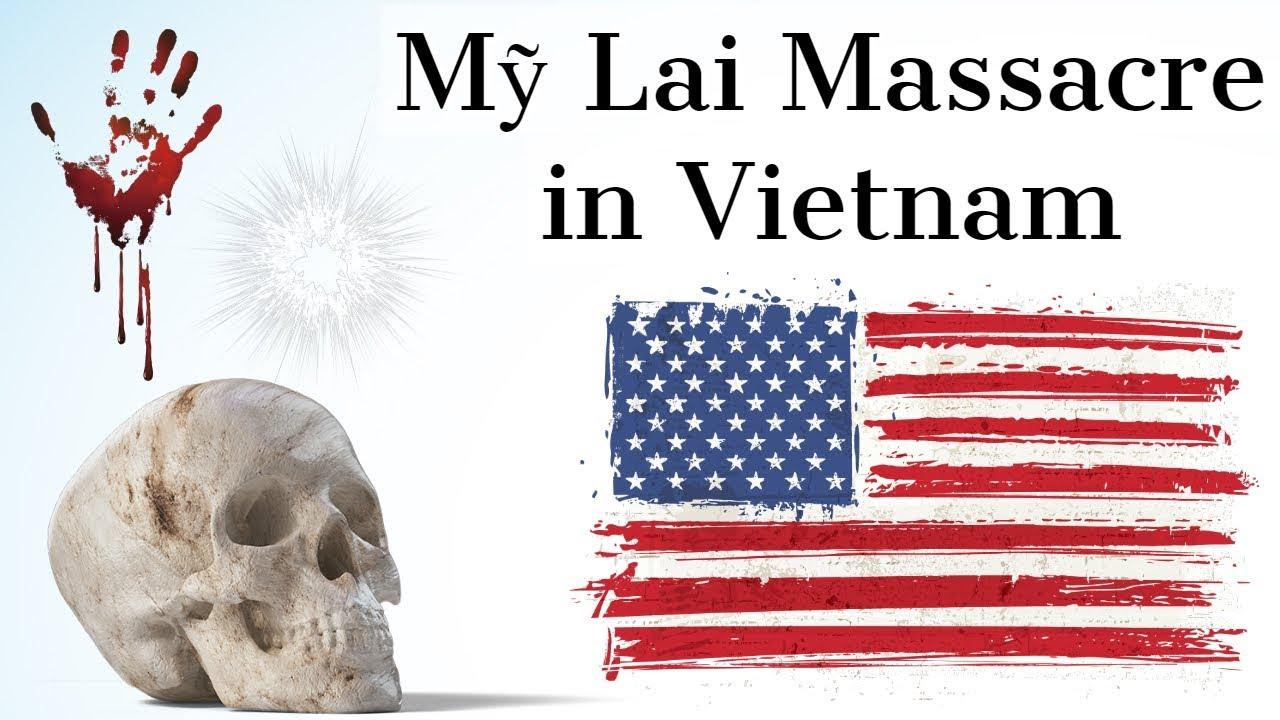- The small village of My Lai is located in Quang Ngai province, which was believed to be a stronghold of the communist National Liberation Front (NLF) or Viet Cong (VC) during the Vietnam War.
- Quang Ngai province was therefore a frequent target of U.S. and South Vietnamese bombing attacks, and the entire region was heavily strafed with Agent Orange, the deadly herbicide.
- In March 1968, Charlie Company—part of the Americal Division’s 11th Infantry Brigade—received word that VC guerrillas had taken control of the neighboring village of Son My. Charlie Company was sent to the area on March 16 for a search-and-destroy mission.
- At the time, morale among U.S. soldiers on the ground was dwindling, especially in the wake of the North Vietnamese-led Tet Offensive, which was launched in January 1968. Charlie Company had lost some 28 of its members to death or injuries, and was down to just over 100 men
REVENGE
- Army commanders had advised the soldiers of Charlie Company that all who were found in the Son My area could be considered VC or active VC sympathizers, and ordered them to destroy the village.
- When they arrived shortly after dawn, the soldiers—led by Lieutenant William Calley—found no Viet Cong. Instead, they came across a quiet village of primarily women, children and older men preparing their breakfast rice.
- The villagers were rounded up into groups as the soldiers inspected their huts. Despite finding only a few weapons, Calley ordered his men to begin shooting the villagers.
MASSACRE
- On the Saturday morning of 16 March at 7:30 a.m., around 100 soldiers from Charlie Company led by CPT Ernest Medina
- Captain Medina’s command post remained outside. On approach, both platoons fired at people they saw in the rice fields and in the brush.The villagers, who were getting ready for a market day, at first did not panic or run away, and they were herded into the hamlet’s commons
- Trooper pushed villager into a well and threw a grenade in the well. Next, he saw fifteen or twenty people, mainly women and children, kneeling around a temple with burning incense. They were praying and crying. They were all killed by shots in the head
- A large group of approximately 70–80 villagers was rounded and led to an irrigation ditch east of the settlement. All detainees were pushed into the ditch and then killed after repeated orders issued by Lieutenant Calley, who was also shooting.
- He remembered that he was shooting into women with babies in their hands.One group of 20–50 villagers was herded south of Xom Lang and killed on a dirt road.
- During this operation, between 60 and 155 people, including women and children, were killed.Over the next day, both companies were involved in additional burning and destruction of dwellings, as well as mistreatment of Vietnamese detainees.
- While some soldiers of Charlie Company did not participate in the crimes, they neither openly protested nor complained later to their superiors.
HUGH THOMPSON .
- The My Lai massacre reportedly ended only after Warrant Officer Hugh Thompson, an Army helicopter pilot on a reconnaissance mission, landed his aircraft between the soldiers and the retreating villagers and threatened to open fire if they continued their attacks.
- ―We kept flying back and forth … and it didn’t take very long until we started noticing the large number of bodies everywhere. Everywhere we’d look, we’d see bodies. These were infants, two-, three-, four-, five-yearolds, women, very old men, no draft-age people whatsoever,‖ Thompson stated at a My Lai conference at Tulane University in 1994.
- Thompson and his crew flew dozens of survivors to receive medical care. In 1998, Thompson and two other members of his crew received the Soldier’s Medal, the U.S. Army’s highest award for bravery not involving direct contact with the enemy.
COVERING UP
- By the time the My Lai massacre ended, 504 people were dead. Among the victims were 182 women—17 of them pregnant—and 173 children, including 56 infants.
- Knowing news of the massacre would cause a scandal, officers higher up in command of Charlie Company and the 11th Brigade immediately made efforts to downplay the bloodshed.
- The coverup continued until Ron Ridenhour, a soldier in the 11th Brigade who had heard reports of the massacre but had not participated, began a campaign to bring the events to light. • The inquiry, headed by Lieutenant General William Peers, released its report in March 1970 and recommended that no fewer than 28 officers be charged for their involvement in covering up the massacre.
CHARGES
- The Army would later charge only 14 men, including Calley, Captain Ernest Medina and Colonel Oran Henderson, with crimes related to the events at My Lai.
- All were acquitted except for Calley, who was found guilty of premeditated murder for ordering the shootings, despite his contention that he was only following orders from his commanding officer, Captain Medina.
- In March 1971, Calley was given a life sentence for his role in directing the killings at My Lai. Many saw Calley as a scapegoat, and his sentence was reduced upon appeal to 20 years and later to 10; he was paroled in 1974.
AFTERMATH
- By the early 1970s, the American war effort in Vietnam was winding down, as the Nixon administration continued its ―Vietnamization‖ policy, including the withdrawal of troops and the transfer of control over ground operations to the South Vietnamese.
- Among the American troops still in Vietnam, morale was low, and anger and frustration were high. Drug use increased among soldiers, and an official report in 1971 estimated that one-third or more of U.S. troops were addicted.
- My Lai massacre and the efforts made by higher-ranking officers to conceal it exacerbated anti-war sentiment and increased the bitterness regarding the continuing U.S. military presence in Vietnam.

























 WhatsApp
WhatsApp